The downturn is expected to accelerate in the second quarter, with global trade projected to record a quarter-on-quarter decline of 27 percent.
A report compiled by the Committee for the Coordination of Statistical Activities has revealed the extent of damage caused by the coronavirus pandemic with global trade witnessing a three percent drop in the first quarter of 2020, accompanied by adverse impact on every sector.
Some startling economic numbers include a 9 percent year-on-year fall in global production and manufacturing output, leading to a fall in global merchandise trade by almost 27 percent.
The decline in global tradeThe global trade values point to a fall of 3.0 percent in the first quarter of 2020 with respect to the previous quarter. Most of the impact of these measures, however, will affect global trade in the second quarter of the year, with an estimated quarter-on-quarter decline of 26.9 percent.
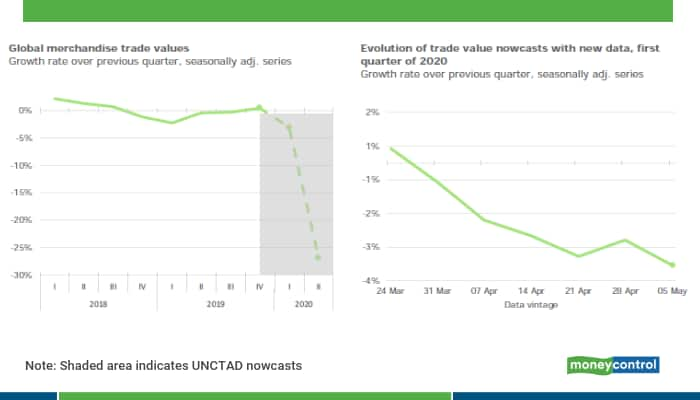
The largest fall in global commodity prices
Commodity prices have been falling at an accelerated rate. UNCTAD's Free Market Commodity Price Index (FMCPI) lost 1.2 percent of its value in January, 8.5 percent in February, and 20.4 percent in March. Fuels were the main driver behind this development, recording a price fall of 33.2 percent in March, while minerals, ores and metals, food and agricultural raw materials saw prices decreasing by less than 4 percent.
The fall of more than 20 percent in one month is unique in the history of the FMCPI. From July to December 2008, after the outbreak of the global financial crisis, the maximum month-on-month decrease was 18.6 percent. At that time, the descent lasted six months. The duration and overall strength of the current downward trend in commodity prices and global trade are yet uncertain.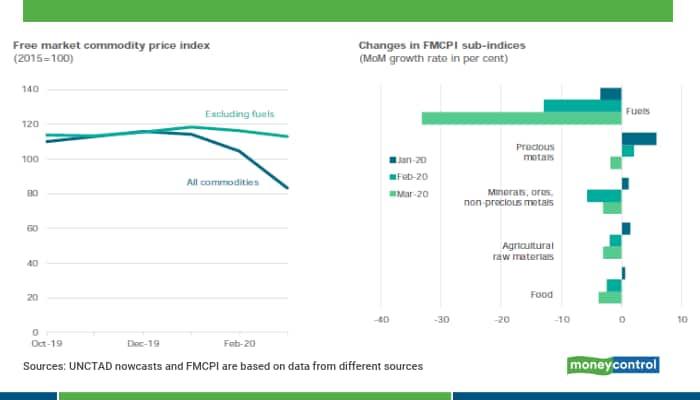
For the first two months of 2020, China showed a sharp reduction of output, which can be explained by the celebrations of the Chinese New Year at the end of January 2020 as well as the beginning of the lockdown of Wuhan and other regions to contain the virus at the same time. It remains to be seen, how fast China will catch up the losses made during the first quarter of 2020.
The aggregate for the world manufacturing production also shows a sharp decline caused mainly by large share of China in global manufacturing. As other countries will be included global manufacturing growth is expected to drop further.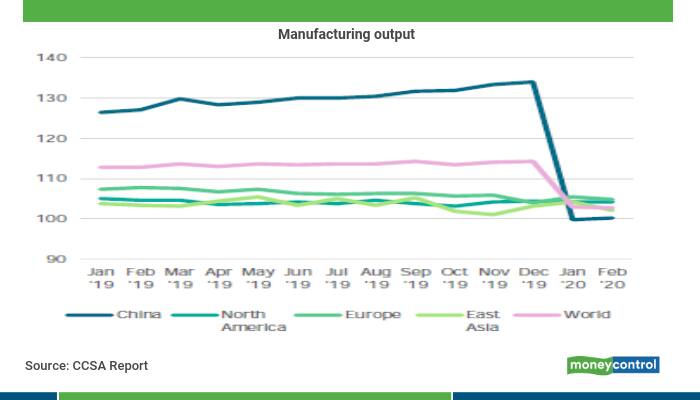
The aviation industry bears the weight of the consequences of the COVID-19 outbreak heavier than other industries as it is the transport of people and goods all across the globe for travel, tourism, business, and trade.
- Flights: With around 90% of the fleet being grounded and travel demand hitting nearly zero, the traffic reduction has far exceeded the level observed in events such as SARS and terror attacks of 11 September 2001, putting the aviation industry under extreme strain.
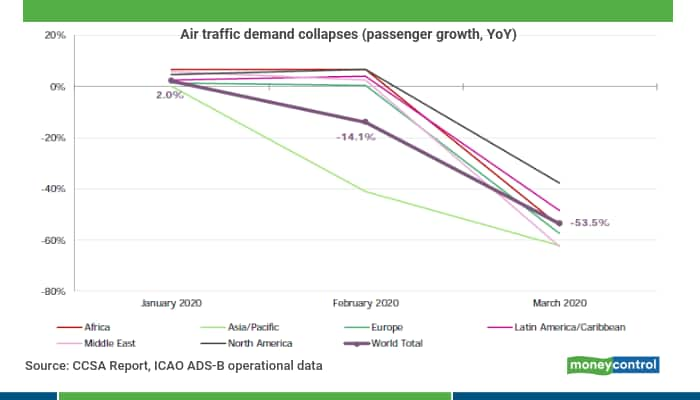
- Passengers: International Civil Aviation Organization (ICAO)’s economic impact analysis of COVID-19 on aviation indicates that in the month of March when the pandemic was declared on 11th, 38% of seat capacity was cut globally compared to the same period of 2019. Passenger numbers plunged by 54% or 198 million, due to dampened load factor. Asia/Pacific recorded the biggest fall in passenger numbers by 85 million, followed by Europe and North America, by 50 and 35 million, respectively. Air cargo traffic dropped 19% in March, offset by the recent increasing demand for cargo freighters in transporting medical supplies.
- Revenue: The slump in air traffic has further caused severe financial pressure on all stakeholders in the aviation sector. Only in March, airlines are estimated to lose USD 28 billion in revenues, and airports and air navigation service providers have lost around USD 8 billion and USD 824 million, respectively.
Labour markets' biggest employment decline since the World War-IIGlobal hours worked could drop by 10.5 percent this quarter, equivalent to 305 million full-time workers with a 48-hour workweek. It is the worst global crisis since the Second World War. Indeed, the drop in hours worked already outpaces that of the 2008-2009 financial crisis. Worryingly, COVID-19 is now also impacting the developing world, where capacities and resources are severely constrained.
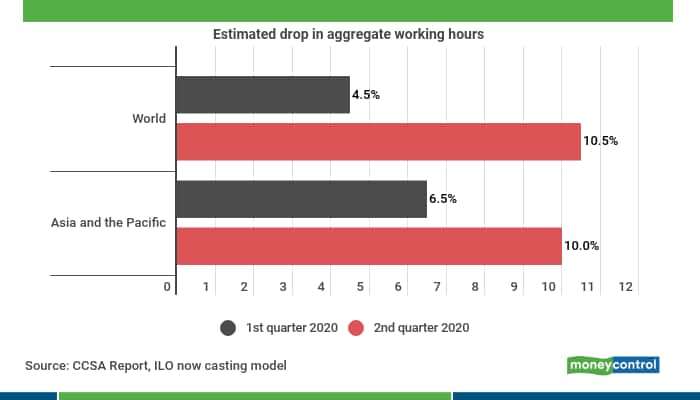
In an unprecedented crisis to the tourism sector, possible scenarios point to declines of 60% to 80% in international tourist arrivals for the year, depending on the speed of the containment and the duration of travel restrictions and shutdown of borders. Additionally, the availability of tourism-related statistical data for 2020 will likely be impacted.
Education on halt: 1.6 billion learners are affected by school closures
In mid- February 2020, 300 million learners were affected by nationwide closures of schools and universities. Two months later, this number has grown to nearly 1.6 billion students in 192 countries, representing 90% of the global student population. In addition, 140 million students live in countries with localised school closures. Only a few countries allowed schools to function.
Globally, the nationwide closures affected approximately 155 million children in pre-primary education, 691 million primary school pupils, 537 million secondary school pupils, and 191 million students in tertiary education.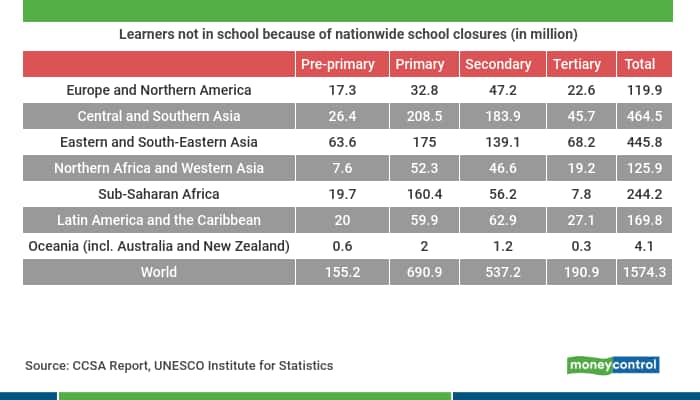
Crime Rate: Diversified impacts of COVID-19 on homicide and drug trafficking
Lockdown measures have reduced violence in countries with a relatively low homicide rate while having no impact on high levels of homicide driven by organized crime and gang violence.
In countries with a low level of homicide, the intensity of lockdown measures seems to have drastically reduced violence. Available reports on countries of Western Europe and the United States reflect a sharp decrease of lethal violence. For example, the tight lockdown regime enforced in Italy has resulted in a sharp decrease in homicide levels. The strict enforcement regime, high level of social control, and measures of social support may be contributing to reducing violence.
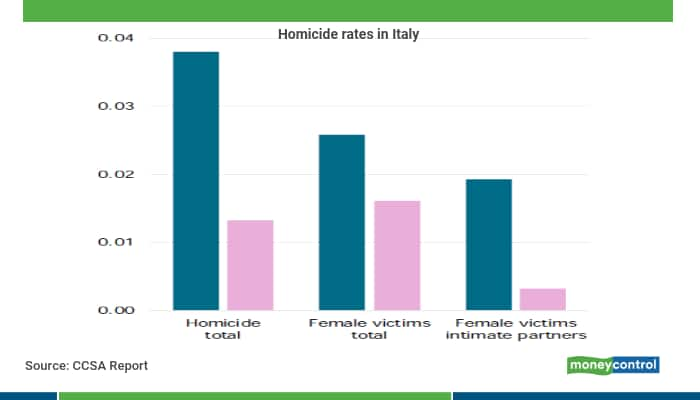
In this context, impact on domestic violence remains challenging to assess: while a decrease of gender-based killings was observed in some countries, requests of assistance to helplines or service centers protecting victims of gender violence increased in a number of countries, showing heightened risk of this kind of violence. COVID-19’s impact on drug trafficking is linked to the way drug shipments typically cross borders. International trafficking of heroin, primarily transported by land, has been disrupted more than cocaine trafficking which relies on sea routes. Relatively recent large seizures of cocaine in European ports demonstrate the ongoing international trafficking of cocaine.
COVID-19 pushing 40-60 million people into extreme povertyCOVID-19 is taking its toll on the world, causing deaths, illnesses and economic despair. But how is the deadly virus impacting global poverty? Here we’ll argue that it is pushing about 40-60 million people into extreme poverty.
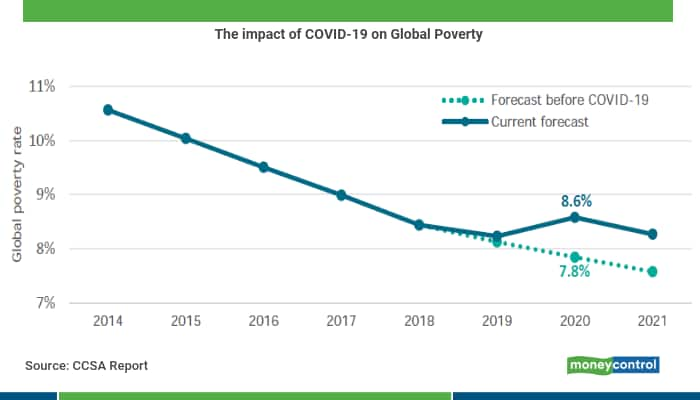
Facebook-BCG report suggests these measures for businesses to unlock the changing consumer behaviour in the current pandemic. Read More!














